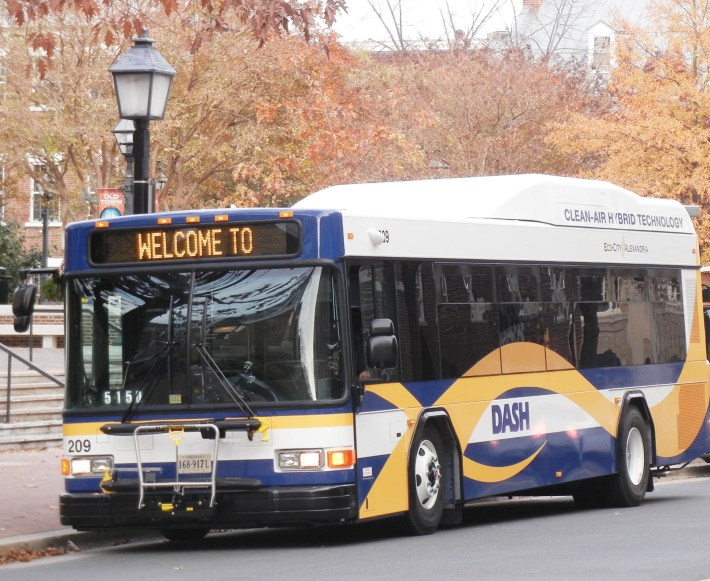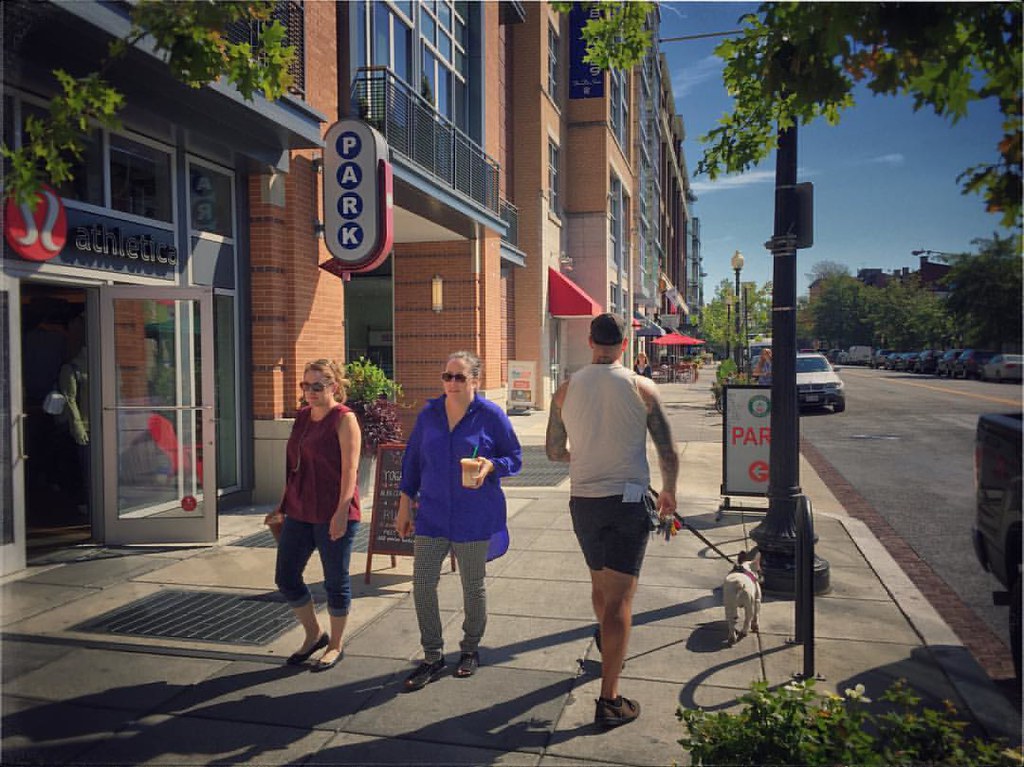Many transportation reform advocates were disappointed in the performance measures included in MAP-21, which was signed into law in July 2012. They weren’t tied to funding, they gave states and localities too much leeway to set their own performance targets, and they measured the wrong things. But there’s still a chance for them to get much stronger.

The Federal Highway Administration has six more months to finalize the rulemaking, in which they’ll define and give guidance on the metrics. Some at U.S. DOT feared that FHWA would neglect non-automotive modes, and reached out to the Eno Center for Transportation, the Bipartisan Policy Center and the State-Smart Transportation Initiative. Those groups convened a daylong task force in June, and yesterday they released their findings.
“Performance of the system, as we see it, isn’t just limited to the speed of cars,” said Eric Sundquist of SSTI, “but how does it work with the local network, how does it work with other modes, how does it perform in terms of some goals that are somewhat nontraditional for state DOTs -- economic development, property values, livability, sustainability, and those sorts of things.”
Measuring our transportation network by those criteria might be “bleeding edge,” Sundquist acknowledged, and not on state DOTs’ radar. “But MAP-21, with its focus on system performance and congestion, certainly gets us a foot in the door in having the conversation,” he said. “And the way we do it under MAP-21 will probably set the pattern for how we think about it going forward.”
The groups focused their attention on two MAP-21 performance measures -- congestion and system performance -- that could be interpreted either to consolidate the dominance of highways or to promote multi-modalism, in hopes that they could inspire FHWA to do the latter.
We’ve written before about the dangers of a rulemaking that sets in stone a performance measure on congestion that measures nothing but travel delay for automobiles.
“Measures of congestion are largely highway-focused and are not necessarily providing a good indication of mobility and transportation outcomes,” Eno’s Joshua Schank told reporters yesterday. He said congestion isn’t always bad, especially in places where there’s still capacity to add more infrastructure for walking, biking, and transit, or where congestion isn't harming economic development. “Congestion might not be the problem you’re trying to address,” he said, “but actually trying to get more mobility or accessibility to that area, rather than dealing with congestion itself.”
He’d like to change MAP-21's "congestion" measure to one looking at average trip time. That’s a multi-modal way of addressing the issue people really care about: how long will it take them to get somewhere.
Tied to that is MAP-21's metric on system performance. The only systems that metric evaluates are the national highway system and the interstate system. “It’s a synonym for congestion,” Schank said. “By its very nature, because you’re measuring the performance of those highway systems, you’re not looking at the larger system.”
So Eno, BPC and SSTI would prefer a measure of system reliability.
In the last Travel Time Index put out by the Texas A&M Transportation Institute, there was a new Planning Time Index, a measure of the extra time a traveler would need to budget for a trip to ensure that she would arrive on time. While we were dubious of the real-life utility of an index that has a Washington, DC, traveler allowing three hours for a half-hour trip, it’s certainly true that the unpredictability of trip time can be very frustrating for travelers. So Eno and the others would like to focus on the difference between regular congestion and variable congestion -- across all modes.

These new proposals aren’t perfect. A measure of trip time could end up elevating highways. “Your standard urban bus that carries lots of people but does so slowly -- it’s a very valuable commodity at the scale where it works,” commented Bill Millar, former head of the American Public Transportation Association. “I think ‘travel time’ tends to skew to the higher speed trip even though that might not be at all valuable in terms of local quality of life.”
On the other hand, a trip time metric addresses something fundamental that congestion totally misses: land use. Compact development will score better than sprawl. “In big cities, where a substantial number of trips are made by walking, you’re going to see much faster trip times for places that have focused on pedestrian orientation, better land use decisions, more compact development,” Schank said. “They’re going to do better than places that are 99 percent auto dependent and wind up with much greater sprawl.”
Schank and his colleagues are hoping that the various performance measures will balance out the strengths and weaknesses of different modes. But the important thing, they say, is to be “mode-agnostic” and measure simply how well the transportation system moves people and goods to the places they need to go. Whichever mode does that the best will come out on top.
That’s why it’s too bad MAP-21 doesn’t do a better job mandating emissions measures. The June meeting didn’t address emissions, since they were mostly focused on the areas where they worried FHWA’s highway-centric approach could end up with too tight of a focus on roads.
MAP-21 includes an emissions measure under the Congestion Mitigation and Air Quality program section -- meaning it only applies to high-population areas that are in “non-attainment” of federal air quality regulations, because those are the only ones that are required to develop a CMAQ Program Performance Plan.
Even for those places, says Deron Lovaas of NRDC, there are no teeth to the measure. “There is no actual requirement that performance improve and there is little incentive to produce an effective plan,” he said. “There are no consequences for noncompliance, such as an explicit link to money or to Clean Air Act conformity status or some other serious mechanism.”
A stronger emissions measure is necessary to tilt the transportation system -- mode-agnostically, of course -- toward more sustainable means.
“Maybe next law we’ll tie it to policies that really motivate jurisdictions,” Lovaas added.
Another place reformers would like to see stronger performance goals is in the realm of safety. Bicycle advocates have been asking for a separate safety measure for bicyclists and pedestrians. While traffic fatalities for motorists are dropping, they are on the rise for other road users.
However, this demand flies in the face of Schank’s proclivity toward mode-neutrality in goal-setting. He says that he’s sympathetic to the fact that safety officials put their efforts where the greatest number of fatalities happen -- and that’s inside cars. At the same time, though, he understands that if you want to set public policy that encourages biking and walking, it is necessary to work on ensuring safety specifically for those modes.
And it’s not just the metrics themselves but the way they work under MAP-21 that needs to be revisited. States and MPOs shouldn’t be able to set their own targets. Eno and company don’t recommend any targets at all, in fact; they’d rather judge each locality against its past performance and look at improvement.
This approach has its pitfalls too. It could reward poor performers over those who have already spent years improving their transportation systems.
“That’s always the challenge with these performance measures: To what extent are you rewarding failure by setting them up this way?” Schank said. “The way that we try to deal with that is to say that the performance measures need to be an array of measures across the spectrum. So that way it balances out a little bit. Some places might do better in some areas to start, and other places might do better in other areas to start.”
“But of course,” he went on, “Congress didn’t follow that recommendation, and they have measures for each individual program as opposed to looking at across-the-board results. So they exacerbated that problem.”
Perhaps most importantly, there need to be real consequences for failure. Federal transportation funding will never be 100 percent merit-based and shouldn’t be, but there can be a “bonus pool” of funding to give extra credit to states and cities that are getting better at meeting national goals like accessibility and sustainability.
FHWA's preliminary rulemaking will likely be released for public comment in the next month or two.





